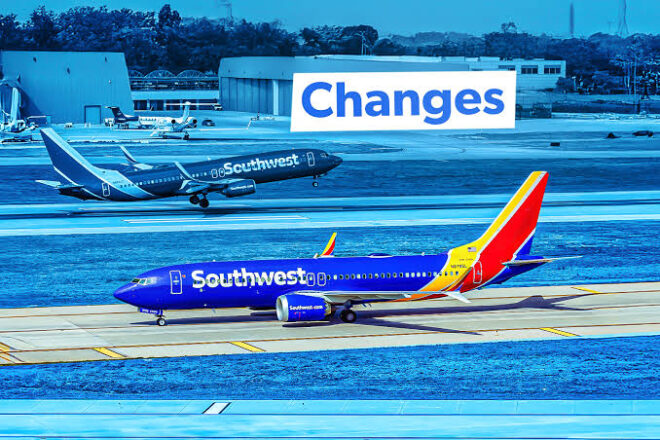
Why the Uproar With Southwest Airlines Is So Much Bigger Than Checked Bags
Southwest Airlines has long been known for its customer-friendly policies, budget-friendly fares, and unique approach to air travel. However, recent controversies surrounding the airline have sparked significant public frustration. While some passengers initially expressed anger over lost or delayed checked bags, the outrage goes far beyond misplaced luggage.
The uproar with Southwest Airlines represents a broader issue within the airline industry—one that includes operational failures, customer service challenges, and even larger systemic problems. This article explores why Southwest’s troubles have escalated into something much larger than just baggage woes.
1. The Breaking Point: Southwest’s Operational Meltdown
Southwest Airlines suffered a historic meltdown during the 2022 holiday season, canceling thousands of flights and stranding millions of passengers across the United States. While other airlines also faced disruptions due to weather, Southwest’s issues were far more severe and lasted much longer.
1.1. What Happened?
The airline’s failure was not simply due to bad weather; it was a result of outdated technology, an inefficient scheduling system, and a lack of investment in infrastructure. When winter storms hit, other airlines managed to recover quickly. Southwest, however, could not reassign pilots and flight crews efficiently, leading to a total breakdown in operations.
1.2. A Failure Decades in the Making
Unlike other major airlines, Southwest uses a point-to-point route system instead of a hub-and-spoke model. This allows for more direct flights, but it also makes the airline more vulnerable to widespread disruptions. When the system breaks down, there is no centralized hub to reroute flights, causing cascading cancellations.
Southwest’s outdated crew scheduling software also played a critical role in the crisis. Many flight attendants and pilots were stuck in the wrong locations, unable to communicate with the airline’s overwhelmed scheduling department. These technological shortcomings turned what could have been a temporary disruption into a full-blown operational failure.
2. Southwest’s Customer Service Crisis
2.1. The Impact on Passengers
Passengers were left stranded for days, with little to no communication from the airline. Many lost their checked bags, had flights canceled without alternative options, and were unable to get through to customer service. Southwest’s inability to handle the crisis fueled customer anger.
2.2. Refunds, Reimbursements, and Lawsuits
Following the meltdown, Southwest promised to refund passengers and cover expenses like hotel stays and rental cars. However, many customers reported long delays in receiving compensation. The Department of Transportation even investigated whether Southwest was in violation of federal refund policies.
Several lawsuits have been filed against the airline, alleging deceptive business practices and failure to deliver promised services. Consumer advocacy groups have also called for stronger airline regulations to prevent such disasters in the future.
3. The Bigger Issue: Southwest’s Reputation and Business Model
3.1. Southwest’s “Low-Cost, High-Trust” Model at Risk
For decades, Southwest built its brand around affordability, transparency, and customer loyalty. The airline’s policies—such as free checked bags and no change fees—set it apart from competitors. However, the operational meltdown damaged the trust that customers once had in the airline.
Many longtime Southwest customers began questioning whether the airline could still be relied upon. Unlike a typical delay or baggage mishap, this crisis revealed deeper problems with Southwest’s ability to operate efficiently in times of stress.
3.2. The Business Perspective: Stock Prices and Leadership Response
Southwest Airlines saw its stock price decline following the controversy, reflecting investor concerns about its long-term stability. CEO Bob Jordan acknowledged the failures and promised improvements, but many analysts questioned whether the company was truly committed to modernizing its technology.
Additionally, Southwest’s employee unions expressed frustration, saying they had warned the airline about its outdated systems for years. This highlighted a disconnect between leadership and frontline workers who experience operational challenges firsthand.
4. The Broader Airline Industry Problem
4.1. A Warning Sign for Other Airlines
Southwest’s meltdown serves as a warning to other airlines that rely on aging infrastructure and cost-cutting measures. The airline industry, in general, has been slow to adopt modern technology, and Southwest’s crisis exposed how vulnerable airlines can be when they fail to invest in their systems.
4.2. Increased Pressure for Regulation
The U.S. government has faced pressure to hold airlines accountable for mass cancellations and poor customer service. In response to the Southwest crisis, lawmakers have called for stronger consumer protections, including automatic refunds and penalties for airlines that fail to deliver promised services.
5. The Future of Southwest Airlines
5.1. Can Southwest Recover?
Despite the backlash, Southwest Airlines still has a loyal customer base. If the company follows through on its promises to upgrade technology, improve customer service, and prevent future meltdowns, it may be able to regain trust.
However, if another major disruption occurs, Southwest could face permanent reputational damage, pushing passengers toward competitors.
5.2. Lessons Learned
The Southwest Airlines crisis highlights key lessons for the airline industry:
Investment in Technology: Airlines must upgrade outdated systems to prevent large-scale disruptions.
Crisis Management: Airlines need better strategies for handling mass cancellations and communicating with customers.
Regulatory Accountability: Stronger consumer protections are necessary to ensure passengers are treated fairly.
Conclusion
The uproar with Southwest Airlines is about more than just checked bags. It represents a breakdown in trust, a failure of infrastructure, and a warning sign for the entire airline industry. While Southwest’s customer-friendly policies once set it apart, its failure to adapt to modern challenges has put its reputation at risk.
If Southwest wants to regain the confidence of its passengers, it must go beyond apologies and invest in real improvements. Otherwise, it risks losing what once made it a favorite among travelers.